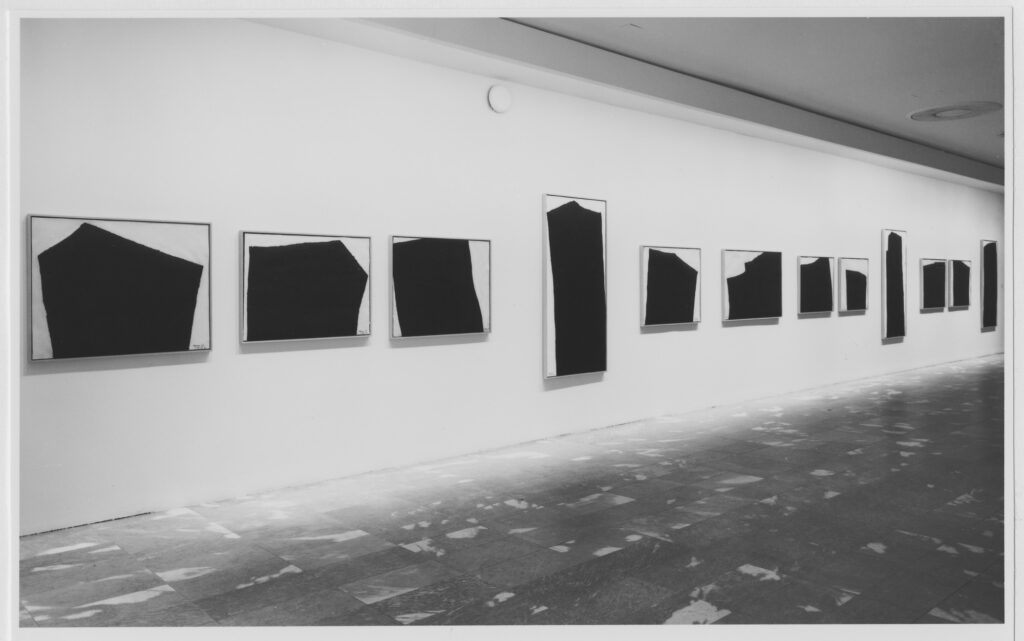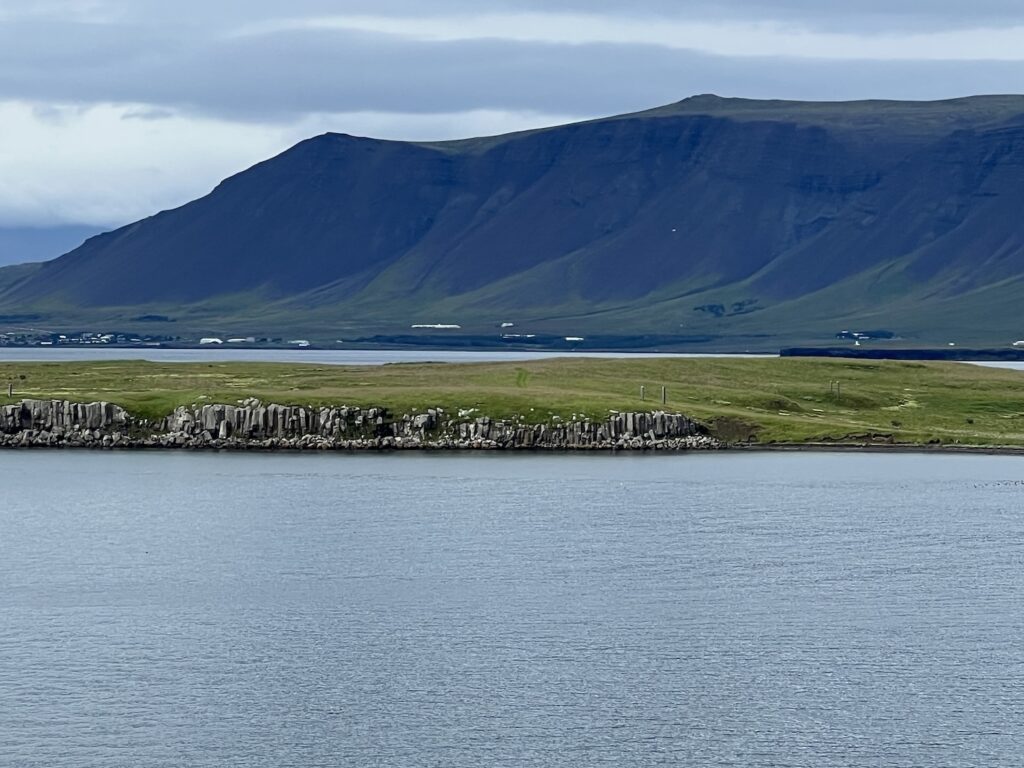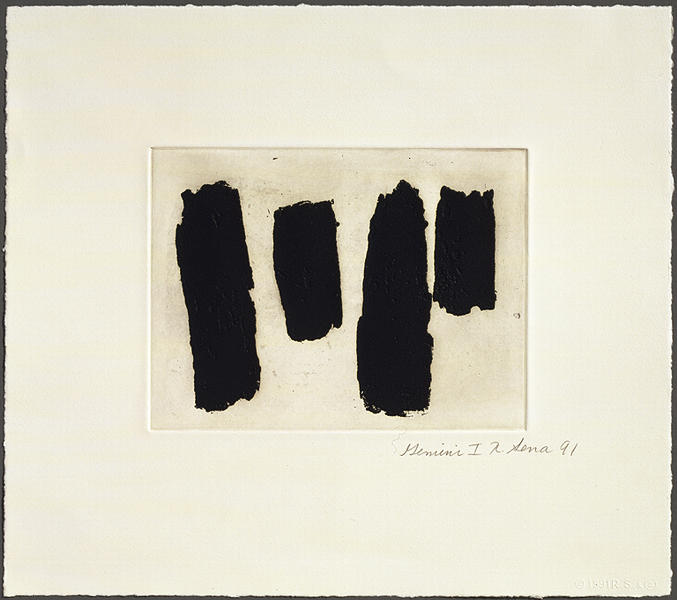
These Afangar Icelandic Series prints were the first Richard Serra prints I ever saw, and they left a deep impression. MoMA hung these rough, craggy prints off the lobby in late 1991, and they felt very much like prints about sculpture, which is something I’d never considered before. But I resolved to get some—which I’ve failed to do, not realizing that they’d sold out long before I knew they existed—and also to visit Afangar, the sculpture in Iceland they related to. Which only took four years.

Afangar is built on on half of Viðey Island, which sits just off what was a small commercial harbor on the north side of Reykjavik. The first time I went there, on a layover to Europe in the winter of 1995, it was dark and cold, and I paid the guy with the only little boat to take me over, and then to come back and pick me up. There were some horses roaming around. I took pics of myself with a timer, and tried to make photos that recreated the angles of the Afangar prints.

When I went back with my wife in 2006, it was early summer, so at least we could take a ferry, and take pics of each other. There were birds nesting in the middle of the paths through the tall grass. There was an Olafur Eliasson structure, The Blind Pavilion (2003), on a hill, which had recently come back from Venice.

The third time I visited was a few weeks ago, in early August, right before I recorded my interview with Mary Louise Schumacher for the Rabkin Foundation. I’d pulled a whole family group onto the tour. The island, the harbor, the city, were all transformed and absolutely hopping. Though no one was really going out onto the circuit of Serra monoliths.
It somehow registered for the first time that, in addition to the 3m and 4m heights of the columns which were spaced to index local changes in elevation, the tops of all the monoliths were 10m above sea level, so they also marked a plane. Experiencing the work had always been about this procession through an undulating but marked landscape. But it was also about the entire site, and the sea. And now Afangar made me wonder how we will measure things in relation to sea level as the seas rise?

We discussed it a bit in the interview—idk if it made the edit—but the next day I saw Afangar again from the deck of a passing ship, not a little ferry. At this remove and height, with a mountain behind it, Viðey seeemed flat, and the Serra seemed small—even smaller than these tiny prints. Which is not something you’d think about a Serra.
Previously, related: Itty Bitty Videy Committee
